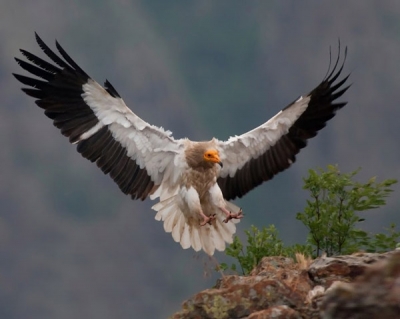
The Egyptian vulture or Neophron percnopterus is a remarkable bird. Apart from being one of the most beautiful vultures in the world, it is also highly resourceful. It has a brilliant white back, chest and head and a bright yellow face and beak. Its eyes are dark and serious-looking. Its black-tipped wings and striking yellow face make it one of the most distinctive birds in the world.
The Egyptian vulture, also called the pharaoh’s chicken and the white scavenger vulture, is found not only in Egypt but in areas ranging from the Iberian Peninsula and North Africa all the way up to India.
This species is much smaller than the average vulture and prefers open, arid areas and rocky crags. They are also seen in and near human settlements. These birds are not fussy about food. They are scavengers that will eat just about anything – carrion, and vegetable waste! They are one of the few bird species that use tools – they use stones to break open eggs to feed on, and twigs to roll wool for nest-building.
Egyptian vultures roost communally on large trees, buildings or on cliffs. Roost sites are usually close to a suitable foraging area. There is little physical difference between males and females. The female typically lays 2 brick-coloured eggs and incubation lasts for 42 days. Incubation duties are shared by both parents. Although largely silent, Egyptian vultures make high-pitched mewing or hissing notes at the nest and screeching noises when feeding at a carcass. Young birds sometimes emit a hissing croak mid-flight. They may hiss or growl when threatened or angry.
In India, the decline of the Egyptian vulture has been rapid with a 90 per cent decrease in 10 years. This bird falls in the ‘Endangered’ category in the IUCN Red list.
Picture Credit : Google




